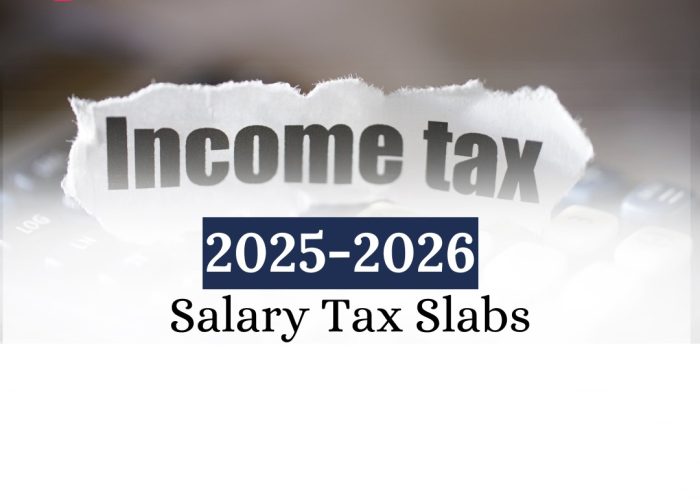
Salaried Pakistanis, Rejoice? Unpacking the 2025-26 Income Tax Cuts
Pakistan’s federal budget for the fiscal year 2025–2026 has brought renewed hope for salaried individuals, as the government introduced notable income tax relief measures.
By adjusting tax slabs and lowering rates, the Finance Act 2025–26 aims to reduce the financial strain on low- and middle-income groups while responding to economic challenges.
Still, some remain skeptical about the actual impact of the relief. In this blog, we’ll outline the updated income tax slabs, analyze the changes, and explain what they mean for Pakistan’s salaried segment.
Overview of the 2025–2026 Income Tax Relief
Finance Minister Muhammad Aurangzeb presented the national budget on June 10, 2025, placing a strong emphasis on easing the burden of salaried taxpayers who have long faced high deductions.
The government introduced a revised tax regime that lowers rates across several brackets to offer financial ease.
According to reports, the relief is especially significant for lower-income individuals, offering tax reductions of up to 80% for those earning between Rs. 600,000 and Rs. 1.2 million annually. In contrast, higher earners making over Rs. 4.1 million per year are expected to see only minor relief of around 3%.
Sources note that the government proposed up to a 4% reduction in income tax for the lower and middle-income groups, along with a 10% increase in salaries and a 7% raise in pensions for government employees.
These initiatives are part of a larger plan to stimulate the economy while working toward a tax collection target of Rs. 14.131 trillion for FY26.
New Income Tax Slabs for 2025–2026
Although slight variations may exist across sources, the revised tax structure focuses primarily on lowering rates for salaried individuals. Based on the Finance Act 2025–26, here’s a streamlined overview of the changes:
Monthly Taxable Salary | Annual Salary | Total Tax 2025 | Total Tax 2026 | Monthly Tax 2025 | Monthly Tax 2026 | (Decrease Per Month) |
50,000 | 600,000 | – | – | – |
| – |
100,000 | 12,00,000 | 30,000 | 6,000 | 2,500 | 500 | (2,000) |
150,000 | 18,00,000 | 120,000 | 72,000 | 10,000 | 6,000 | (4,000) |
200,000 | 24,00,000 | 230,000 | 162,000 | 19,167 | 13,500 | (5,667) |
225,000 | 27,00,000 | 305,000 | 231,000 | 25,417 | 19,250 | (6,167) |
250,000 | 30,00,000 | 380,000 | 300,000 | 31,667 | 25,000 | (6,667) |
300,000 | 36,00,000 | 550,000 | 466,000 | 45,833 | 38,833 | (7000) |
350,000 | 42,00,000 | 735,000 | 651,000 | 61,250 | 54,250 | (7000) |
400,000 | 48,00,000 | 945,000 | 861,000 | 78,750 | 71,750 | (7000) |
450,000 | 54,00,000 | 11,55,000 | 10,71,000 | 96,250 | 89,250 | (7000) |
500,000 | 60,00,000 | 13,65,000 | 12,81,000 | 113,750 | 106,750 | (7000) |
550,000 | 66,00,000 | 15,75,000 | 14,91,000 | 131,250 | 124,250 | (7000) |
600,000 | 72,00,000 | 17,85,000 | 17,01,000 | 148,750 | 141,750 | (7000) |
800,000 | 96,00,000 | 26,25,000 | 25,41,000 | 218,750 | 211,750 | (7000) |
10,00,000 | 1,20,00,000 | 38,11,500 | 36,92,850 | 317,625 | 307,738 | (9,888) |
15,00,000 | 1,80,00,000 | 61,21,500 | 59,81,850 | 510,125 | 498,488 | (11,638) |
20,00,000 | 2,40,00,000 | 84,31,500 | 82,70,850 | 702,625 | 689,238 | (13,388) |
25,00,000 | 2,00,00,000 | 10,741,500 | 10,559,850 | 895,125 | 879,988 | (15,138) |
28,00,000 | 3,36,00,000 | 12,127,500 | 11,933,250 | 10,10,625 | 994,438 | (16,188) |
30,00,000 | 3,60,00,000 | 13,051,500 | 12,848,850 | 10,87,625 | 10,70,738 | (16,888) |
- Annual Income Rs. 600,000 – Rs. 1.2 million: Tax rates reduced by up to 80%, offering significant relief for low-income salaried workers.
- Annual Income Rs. 1.2 million – Rs. 4.1 million: Progressive reductions in tax rates, with middle-income earners benefiting from cuts designed to boost disposable income.
- Annual Income Above Rs. 4.1 million: Limited relief, with tax cuts capped at approximately 3% to maintain revenue collection from higher earners.
- The National Assembly’s Standing Committee on Finance has also approved amendments to further ease the tax burden, reducing the tax rate for incomes between Rs. 600,000 and Rs. 1.2 million from 2.5% to 1%, a move confirmed by Prime Minister Shehbaz Sharif.
- Challenges and Criticisms
- While the tax relief has been welcomed, the budget has also sparked debate regarding its wider impact.
- The Policy Research and Advisory Council (PRAC) acknowledged some positive steps but expressed concern over the lack of focus on the industrial sector. They warned that ignoring this segment could worsen unemployment and deepen economic instability.
- For salaried individuals, the true test lies in whether this tax relief will lead to real financial improvement amid the country’s broader economic challenges.
Conclusion: A Positive Move, but Uncertainty Remains
- The revised income tax slabs for 2025–2026 represent a notable attempt to support Pakistan’s salaried class, especially those in the low- and middle-income brackets.
- With lower rates and focused relief, the government hopes to reduce financial pressure while working toward its ambitious revenue targets.
- However, the actual impact of this relief will depend on its execution and how the wider economy performs in FY26.
